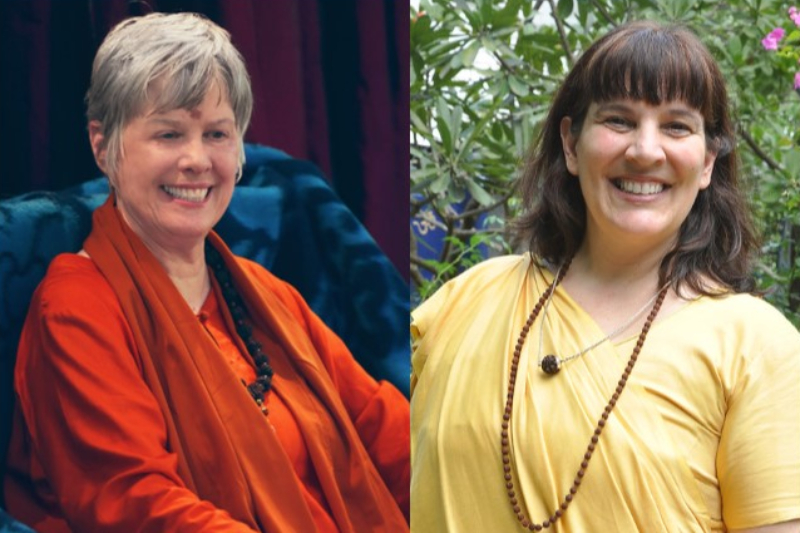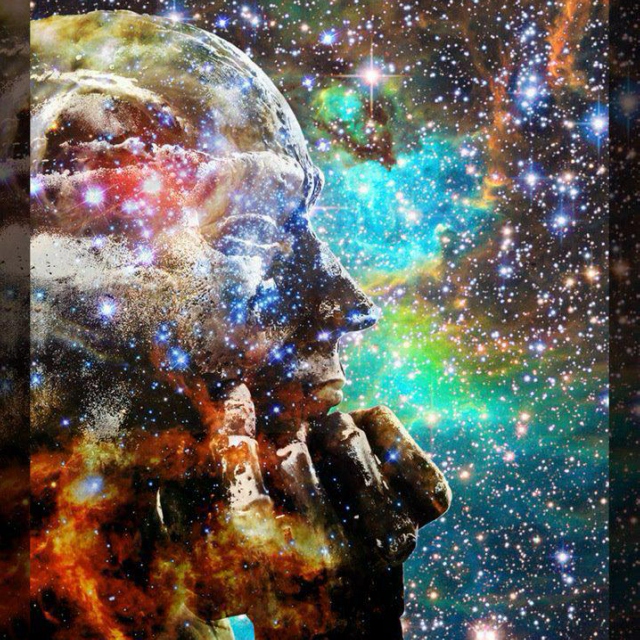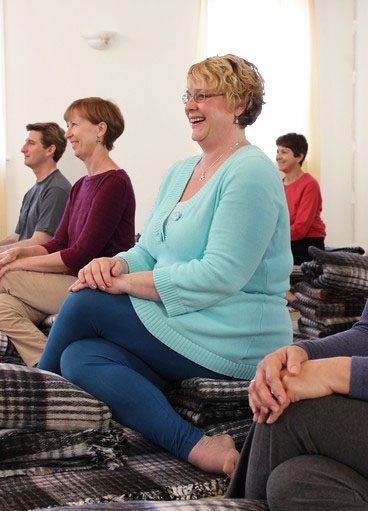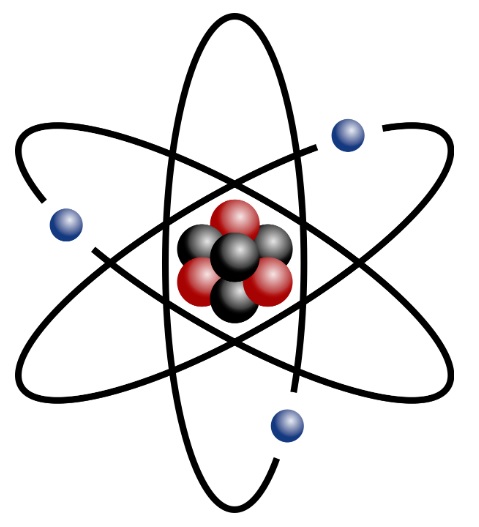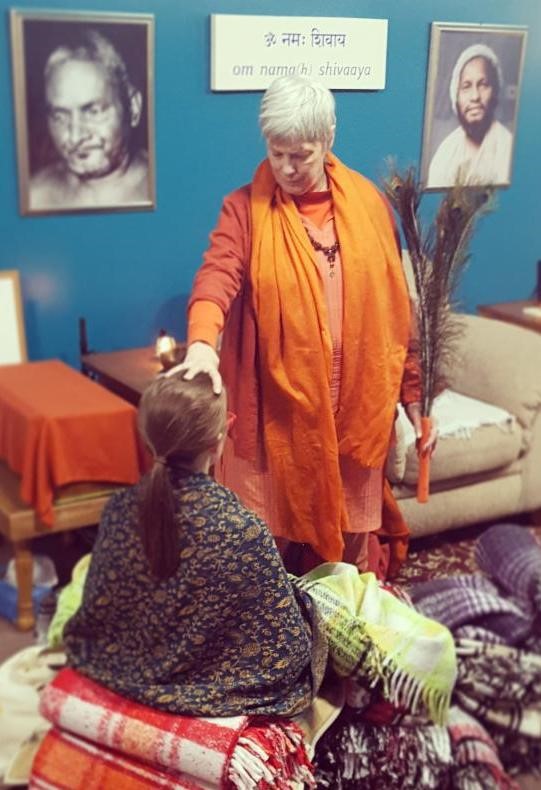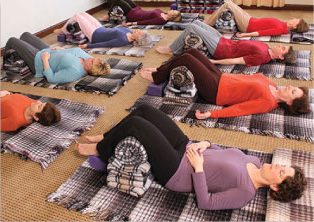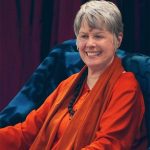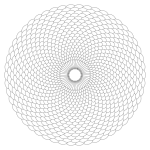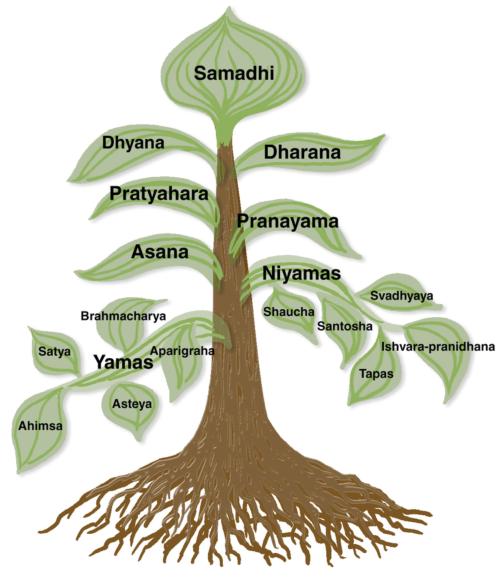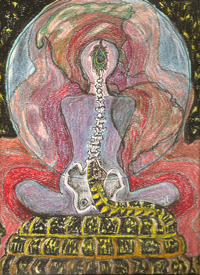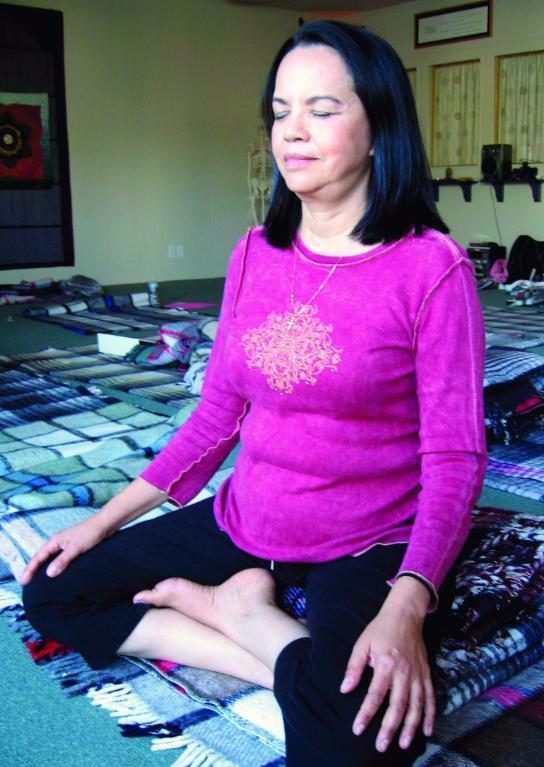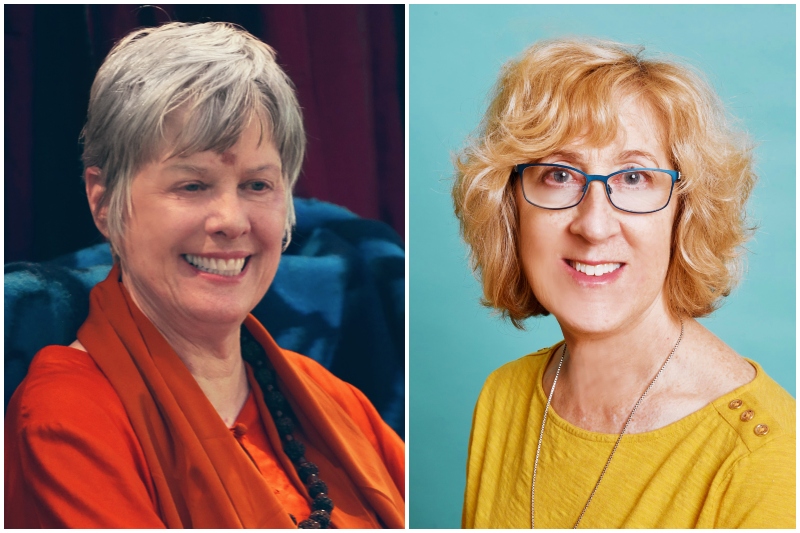 By Swami Nirmalananda & Vidyadevi Stillman
By Swami Nirmalananda & Vidyadevi Stillman
When you are becoming embodied in your own body, grounding and rooting into individuality (small-s self), you expand into your Self (capital-S Self). People think grounding and rooting are limiting, but being spacey is what is limiting. Being out of your body is completely limiting.
When you get present in your body, you get expanded when Guru’s Grace is part of the equation. Without Grace, grounding into your self (small-s self) makes you feel small, lonely, needy, anxious and inadequate. It’s Grace that turns the inward way into an expansive way. In meditation, you invoke Grace when you repeat mantra and meditate on your own Self. In poses, you invoke Grace when you lengthen your tailbone and open your spine.
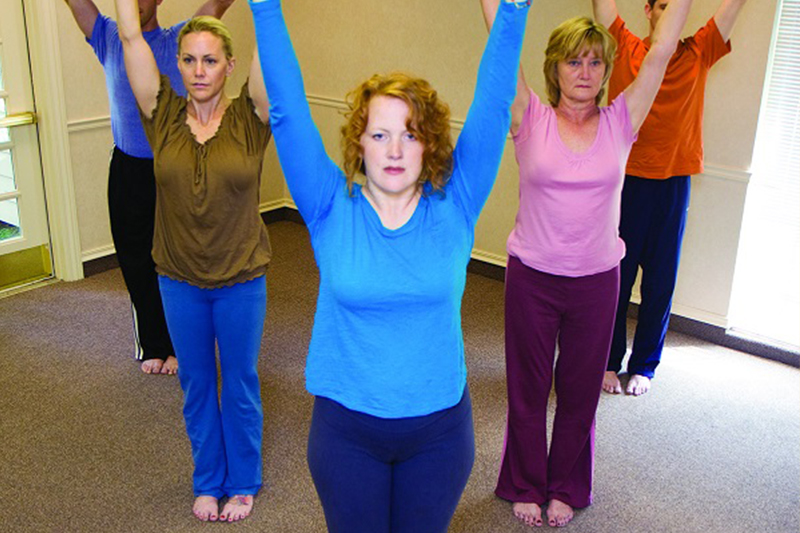 This means that, as you become more embodied, you discover that Self (capital-S Self) is found in your own self (small-s self). You come to know, “Oh, I am I!” Most people think enlightenment is going to be, “Oh! I am something other than what I always was.” In fact, the moment of recognition is, “I am I.”
This means that, as you become more embodied, you discover that Self (capital-S Self) is found in your own self (small-s self). You come to know, “Oh, I am I!” Most people think enlightenment is going to be, “Oh! I am something other than what I always was.” In fact, the moment of recognition is, “I am I.”
Look at it from the other way around: you won’t realize your Self (capital-S Self) by running away from your self (small-s self). When you lengthen your tailbone, it is like lightning striking the earth from the sky, coming all the way down and grounding into being you. This is the Self (capital-S Self) grounded in the self (small-s self).
Try explaining it to yourself it this way:
- When I get present in my self (small-s self), I am
- When I am present, I am
- When I am aware, I am awareness — I am Self (capital-S Self).
Vidyadevi shares a recent meditation that showed her this. “I was repeating mantra and easing back into my Self. Then I felt a thin sheet of almost-liquid come down. It was clearly Nityananda’s[1] presence. At that point my awareness deepened even more. I was behind my mind; I experienced bliss. When my meditation period ended and I opened my eyes, I was still in bliss and behind my mind. From a deeper place inside I was looking through my mind into the world. I was still self (small-s self) but grounded in Self (capital-S Self).”
This means that Self (capital “S” Self) is found in self, revealed through Grace, as Nityananda did for her. Yoga defines grace as one of the five Divine powers, specifically the power of revelation, meaning — Grace Reveals. Svaroopa® yoga is the yoga of Grace. Swami Nirmalananda explains, “It all comes from the initiation Nityananda gave to Muktananda, who gave it to me, and now I make that available to you. The blessing flows from one generation to the next, including straight to you.” The lineage is like a riverbed, which concentrates the flow of water to make it accessible to all. By doing any Svaroopa® yoga or Svaroopa® meditation practices, you step into the river, so you get wet. You position yourself to get drenched with Grace.
The flow of Grace is concentrated in a person. That’s the Guru, the one who carries it to the next generation. A river without a riverbed is a flood; you need a riverbed to concentrate the water and make it safe and usable. The Guru is the person who serves as the riverbed, so that the Grace can flow through. Technically, it is the flow of Grace that is honored by the Sanskrit word “guru.” The Guru is not a body make of flesh and blood. The Guru is not a man or a woman. The Guru is not an individual being or personality. “Guru” is a function: the bestowal of Grace. That job is given to a person, who is acknowledged by the title denoting what they do, “Guru.”
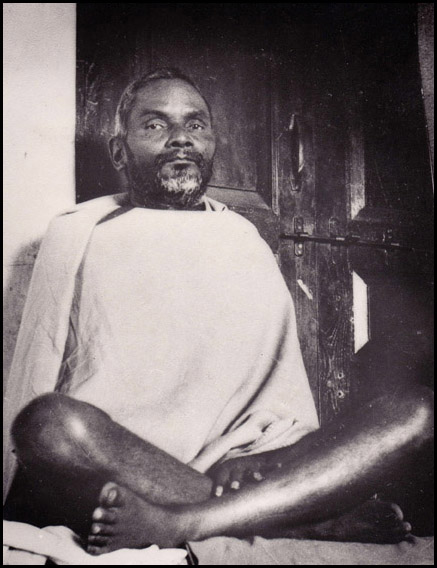 Swami Nityananda (note 1) was asked by a member of the local legislature to define “Guru’s Grace” (guru-k.rpa). He responded with the following questions: “Where is your hometown? How long does it take to get there by road? By sea? By rail?” After the man replied, Nityananda asked how long it would take by air. The legislator said that it would take less than 30 minutes. “Guru’s Grace is like air travel,” Nityananda said, “providing the shortest and fastest way to the place of our origin — in the Infinite.”
Swami Nityananda (note 1) was asked by a member of the local legislature to define “Guru’s Grace” (guru-k.rpa). He responded with the following questions: “Where is your hometown? How long does it take to get there by road? By sea? By rail?” After the man replied, Nityananda asked how long it would take by air. The legislator said that it would take less than 30 minutes. “Guru’s Grace is like air travel,” Nityananda said, “providing the shortest and fastest way to the place of our origin — in the Infinite.”
How many lifetimes do you want to do, before you discover that the Self (capital-S Self) is found in your own self (small-s self)? People go round and round in circles for lifetimes, focusing on distractions and mistaken goals. Yoga’s ultimate goal is to give you your own Self. Life’s ultimate goal is the discovery and ongoing experience of the bliss of your own Self, in your own self.
When you use Svaroopa® yoga to align your spine, you place yourself in that flow of Grace. Nirmalananda’s studies and dedication to Muktananda guarantees it. This is why Svaroopa® yoga works so quickly, deeply and profoundly — this is a path of Grace. Get drenched and hop on the airplane! Do More Yoga!
[1] Swami Nityananda was the Guru of Swami Nirmalananda’s Guru, Swami Muktananda
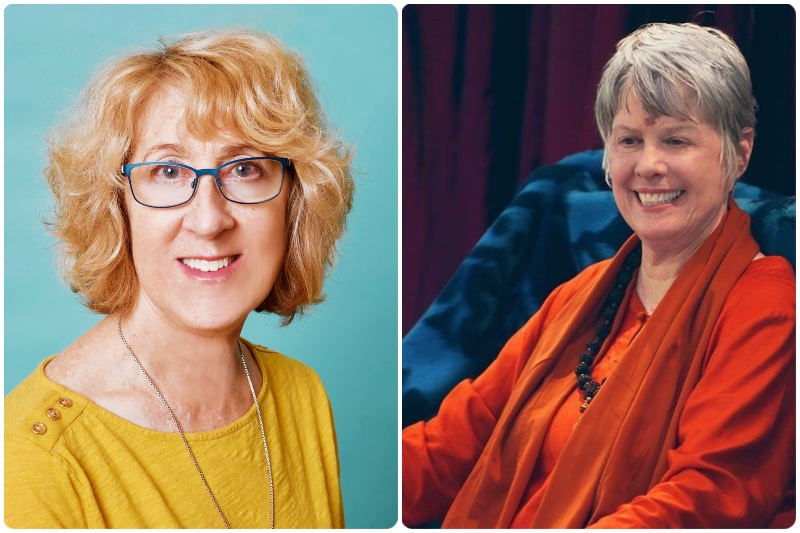 by Vidyadevi Stillman & Swami Nirmalananda Saraswati
by Vidyadevi Stillman & Swami Nirmalananda Saraswati The Guided Awareness is a consciousness practice. This means it is a training in consciousness, a training in pure awareness. Unfortunately when you do a body inventory or analysis, you’re mixing thoughts into your awareness. Such thoughts are like a stream of pollutants, actually making the inherent power of your own awareness less powerful. In addition, most thoughts are toxic. Think about it. In fact, I dare you to think a non-toxic thought!
The Guided Awareness is a consciousness practice. This means it is a training in consciousness, a training in pure awareness. Unfortunately when you do a body inventory or analysis, you’re mixing thoughts into your awareness. Such thoughts are like a stream of pollutants, actually making the inherent power of your own awareness less powerful. In addition, most thoughts are toxic. Think about it. In fact, I dare you to think a non-toxic thought!